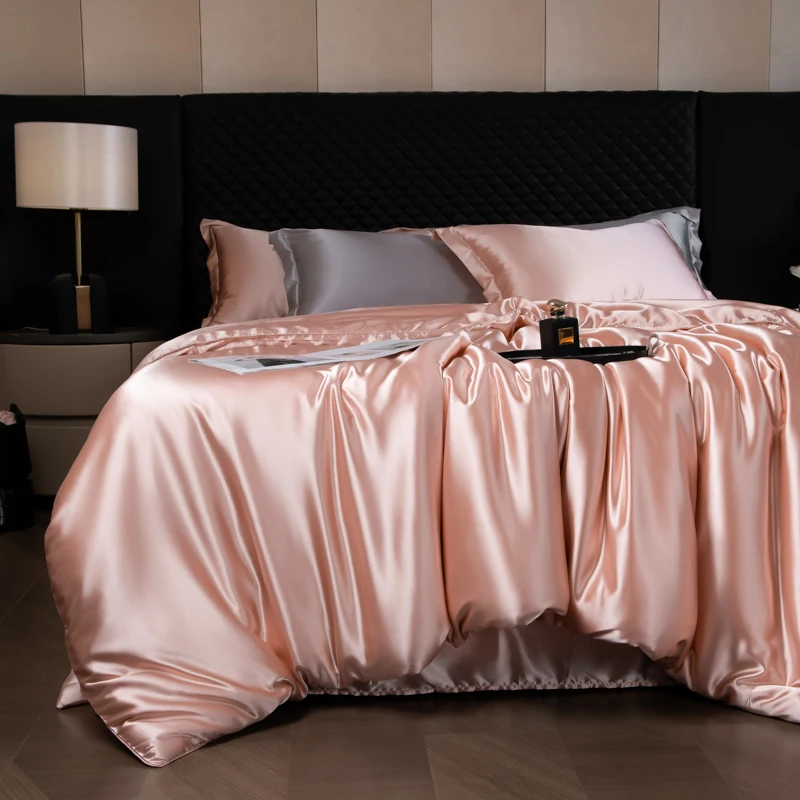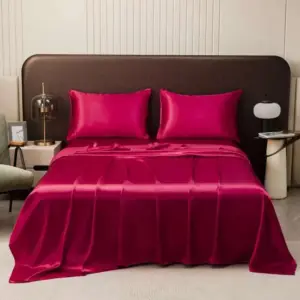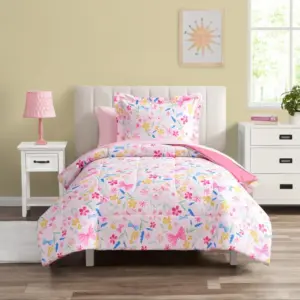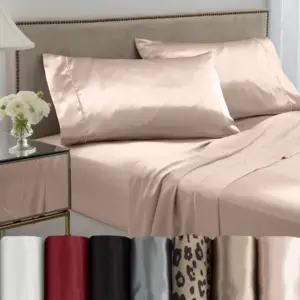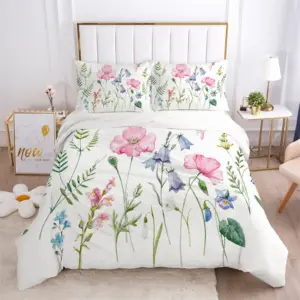1. Understanding Silk Fabric Fundamentals
Silk stands as one of nature’s most remarkable materials—a natural protein fiber produced by silkworms during their cocoon-building process. This extraordinary fabric has captivated humans for thousands of years, earning its reputation as the “Queen of Textiles” through its unparalleled combination of beauty and performance.
What makes silk truly exceptional are its inherent characteristics:
- Lustrous appearance: Silk’s natural triangular prism-like structure allows it to refract light, creating its signature shimmer
- Smooth texture: The fiber’s incredibly fine diameter creates an unmistakably soft hand feel
- Temperature regulation: Silk naturally adjusts to body temperature, keeping you cool in summer and warm in winter
- Hypoallergenic properties: Its protein structure resists dust mites, mold, and many common allergens
The way silk is woven dramatically affects its final properties. The choosing right silk weave involves understanding how different patterns create fabrics with varying levels of durability, drape, sheen, and texture. This relationship between weave structure and fabric properties isn’t merely aesthetic—it determines how the silk will perform in practical applications.
For luxury bedding, understanding silk weaves for bedding becomes particularly important as the weave affects not only how the fabric feels against your skin but also its breathability, durability, and visual appeal. The rich history of silk as a luxury material is reflected in the diverse weaving techniques developed over centuries, each creating fabrics with unique characteristics suited to specific uses found in modern silk sheets and other fine textiles.
2. The Science of Silk Weaving
To truly understand silk fabrics, we need to grasp the basic principles of weaving. At its most fundamental level, weaving involves interlacing two sets of threads:
- Warp threads: These run lengthwise on the loom and provide the foundation structure
- Weft threads: These cross horizontally, interlacing with the warp threads to create the fabric
The specific way these threads interact—their pattern of interlacement—determines the fabric’s structure. When threads skip over multiple perpendicular threads before interlacing, this creates what’s known as a float. Floats are particularly important in creating the distinctive properties of different silk weaves.
With silk, the natural properties of the fiber interact with these weaving techniques in unique ways. The protein structure of silk allows the threads to reflect light differently depending on their arrangement, creating various levels of luster. The way silk threads bend and compress during weaving also affects the fabric’s texture and drape.
Quality silk fabric is often measured by its momme weight (pronounced “moe-mee”), typically ranging from 19-25 momme for premium bedding. This measurement indicates silk density—higher numbers meaning more silk per square inch and generally indicating greater durability and quality. Unlike cotton’s thread count, momme weight provides a more accurate representation of silk quality, accounting for both thread density and silk fiber content.
The silk fabric types complete guide explores how these technical aspects combine with different weave structures to create fabrics with dramatically different properties, from lightweight chiffons to substantial brocades.
3. Classic Plain Weave Silk Fabrics
The plain weave, also known as tabby weave, represents the most fundamental weaving pattern. In this structure, each weft thread simply passes over one warp thread and then under the next in an alternating pattern. While structurally simple, this basic interlavement creates remarkably versatile fabrics when applied to silk.
Silk Habotai/Habutai
* Lightweight with a soft hand feel
* Features a subtle, natural luster
* Smooth surface with a slight sheen
* Often used for linings, summer garments, and lingerie
* Excellent for direct skin contact due to its smooth texture
Silk Taffeta
* Distinguished by its crisp, paper-like texture
* Produces a characteristic rustle or “scroop” when rubbed together
* Has moderate sheen and a flat appearance
* Holds structure well, making it ideal for more architectural designs
* Often used for structured garments and decorative applications
Silk Organza
* Exceptionally lightweight and sheer
* Maintains a stiff, crisp hand despite its delicacy
* Creates a transparent effect with structural integrity
* Used for overlays, structural elements in fashion, and decorative applications
* Features a subtle shimmering quality
Silk Chiffon
* Extremely lightweight and delicate
* Possesses a slightly rough texture despite appearing smooth
* Creates a floating, ethereal effect when draped
* Excellent for layering due to its transparency
* Often used for scarves, overlays, and flowing garments
Silk Dupioni
* Features characteristic slubs (small bumps) throughout the fabric
* Created using silk from double cocoons, resulting in textural interest
* Medium weight with moderate sheen
* Holds structure well while maintaining silk’s natural properties
* Popular for home decor, structured garments, and accessories
What makes plain weave silk fabrics particularly valuable is their balanced construction. The even distribution of threads creates fabrics with good durability despite silk’s natural delicacy. The thread quality and density significantly affect the final fabric—higher quality silk threads and tighter weaving produce premium fabrics with better drape and longevity within the 100 silk sheets category.
Plain weave serves as an excellent foundation for understanding more complex weaves, as it demonstrates silk’s natural properties in their most straightforward application.
4. Luxurious Satin Weave Silk Varieties
Satin weave represents silk at perhaps its most iconic—creating the smooth, lustrous surface that many people immediately associate with luxury silk. Unlike plain weave’s balanced structure, satin weave is characterized by long “floating” threads that pass over multiple perpendicular threads before interlacing. Technically, satin weaves require a minimum of four thread floats, which create the smooth, uninterrupted surface that reflects light so distinctively.
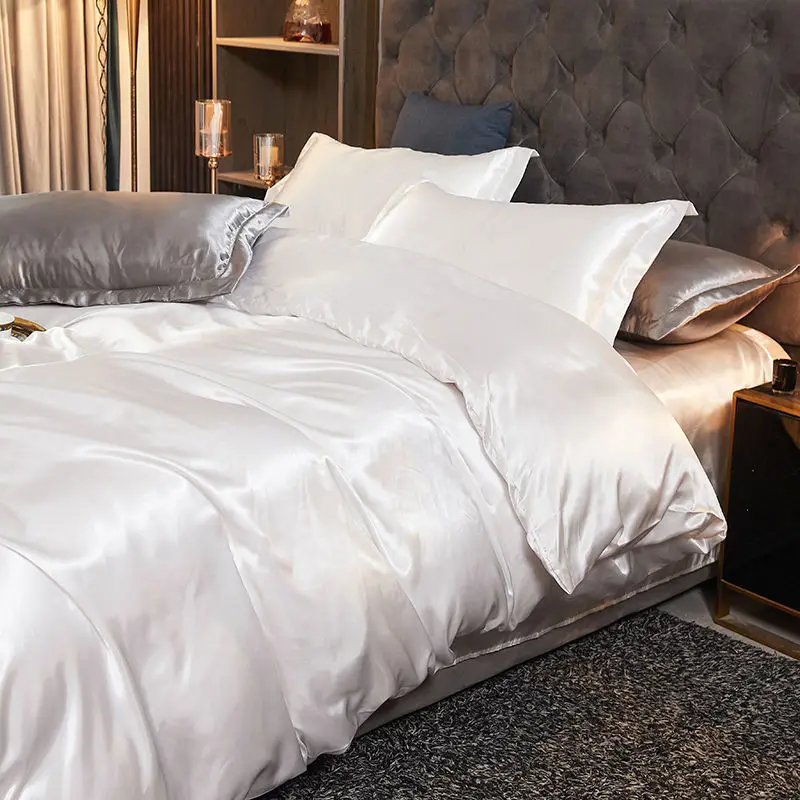
Silk Charmeuse
* Features a high-shine, lustrous front face with a matte back
* Exceptionally fluid drape that follows body contours
* Medium-light weight with excellent flow
* Creates the classic “liquid silk” effect
* Widely used for luxury bedding, lingerie, and flowing garments
Duchess Satin
* Heavier weight with less drape than charmeuse
* Maintains excellent luster but with more structure
* Created with higher density weaving
* Suitable for applications requiring more body and less fluidity
* Often used for structured garments and home furnishings
Silk Satin
* Classic high-sheen finish with smooth hand feel
* Medium weight with moderate drape
* Balanced between fluidity and structure
* Versatile for various applications
* Common in high-end bedding and apparel
The charmeuse habotai silk differences become apparent when examining their surface characteristics. While habotai (a plain weave) has a subtle, balanced luster, charmeuse satin creates dramatic highlights and shadows due to its floating thread structure reflecting light more intensely in specific directions.
Satin weaves do have practical considerations to note. The floating threads that create their beautiful surface can be more prone to snagging or abrasion than balanced weaves. This makes proper care particularly important for satin silk items. However, many find this minor maintenance concern well worth the unparalleled elegance and comfort these fabrics provide in luxury silk bedding sets.
The thread count in satin weaves significantly impacts quality—higher counts create smoother surfaces with more consistent luster and better durability, though the satin structure itself remains the defining characteristic regardless of density.
5. Durable Twill Weave Silk Fabrics
Twill weave creates a distinctive diagonal pattern by offsetting the thread alignment row by row. This clever structure distributes tension more evenly throughout the fabric, creating silk textiles that combine durability with excellent drape and comfort. Unlike plain weave’s balanced structure or satin’s floating threads, twill creates a technical compromise that offers practical benefits.
Silk Serge
* Features classic diagonal ribs visible on the fabric surface
* Medium weight with moderate structure
* More durable than many other silk weaves
* Maintains good drape despite added strength
* Often used for tailored garments and home furnishings
Silk Foulard
* Fine twill structure often used for scarves and ties
* Lighter weight than traditional serge
* Subtle diagonal pattern that’s less pronounced
* Good balance of drape and structure
* Creates an elegant, understated appearance
Silk Twill
* General category encompassing various diagonal patterns
* Can range from fine to heavy depending on construction
* Distinctive texture without being rough
* More resistant to creasing than plain weave
* Versatile for both apparel and home applications
The offset structure of twill weaves naturally creates better wrinkle resistance than plain weave silks. This practical benefit makes twill silks particularly valuable for applications where frequent use might cause creasing in other weave types. The diagonal structure also helps mask minor stains or irregularities, making twill especially practical for items that see regular use.
When comparing durability, twill silks generally outperform plain weave by 20-30% in abrasion resistance tests while maintaining silk’s desirable drape and comfort. This balance between luxury and practicality makes twill weaves particularly valuable in the mulberry silk sheets category, where both elegance and longevity are essential.
For consumers seeking silk’s natural benefits without excessive fragility, twill weaves offer an excellent middle ground between the simplicity of plain weave and the luxury of satin constructions.
6. Decorative Jacquard Silk Patterns
Jacquard weaving represents the pinnacle of textile artistry, creating intricate patterns woven directly into the fabric structure rather than printed on the surface. This sophisticated technique utilizes specialized looms that control individual warp threads, allowing for complex designs impossible with simpler weaving methods.
Silk Brocade
* Features raised decorative patterns, often with metallic threads
* Heavy, structured fabric with substantial feel
* Designs appear three-dimensional due to supplementary weft threads
* Often incorporates multiple colors and textures
* Traditionally used for formal garments and decorative home textiles
Silk Damask
* Creates reversible patterns with contrasting luster
* Pattern and background formed by contrasting satin and matte weaves
* Usually monochromatic with pattern visible through light reflection
* More subtle effect than brocade but still distinctive
* Classic choice for elegant drapery, upholstery, and formalwear
The complex nature of jacquard weaving traces back to the early 1800s when Joseph Marie Jacquard revolutionized textile production with his programmable loom design. This technological breakthrough made intricate patterns more accessible, though they remain premium products due to the specialized equipment and expertise required.
Jacquard silks command higher prices than simpler weaves due to their complexity and visual impact. The production process requires significantly more setup time and technical skill, with each new pattern requiring careful programming and preparation. The result, however, is fabric with unparalleled decorative potential.
The visual impact of jacquard silks makes them particularly valuable for statement pieces in silk bedding sets, where their intricate patterns can transform a bedroom into a truly luxurious sanctuary. Unlike printed patterns that might fade or wear over time, jacquard designs are integral to the fabric structure, maintaining their beauty throughout the textile’s lifespan.
7. Textured Crepe Silk Weaves
Crepe silk weaves represent a fascinating fusion of fiber preparation and weaving technique. These distinctive fabrics derive their characteristic pebbled or subtly wrinkled texture primarily from highly twisted silk threads. When woven and finished, these energized threads create a textured surface unlike any other silk variety.
Silk Crepe de Chine
* Lightweight with fine, uniform texture
* Subtle granular surface without pronounced wrinkles
* Excellent drape with slightly matte appearance
* Soft hand feel despite textural interest
* Versatile for both garments and fine accessories
Silk Georgette
* Sheer, lightweight with pronounced dry texture
* More obvious pebbled surface than Crepe de Chine
* Slightly rough hand feel despite fluid drape
* Creates interesting light diffusion due to texture
* Often used for flowing garments where texture adds visual interest
Silk Crepe-Back Satin
* Dual-textured with satin face and crepe reverse
* Combines lustrous appearance with textural interest
* Medium weight with excellent drape
* Provides design versatility through reversible nature
* Popular for garments where both sides might be visible
The twisted threads in crepe silks create fabrics with exceptional recovery and natural spring. This inherent resilience helps crepe silks resist wrinkles more effectively than many smoother varieties, making them practical choices for travel garments and frequently used items.
Crepe silks interact with light differently than smooth-surfaced varieties. Rather than reflecting light in a concentrated manner like satin, crepe’s textured surface scatters light, creating a soft, diffused glow rather than high shine. This understated elegance makes crepe silks particularly suited to applications where subtle sophistication is preferred over obvious luxury.
The texturing process affects not only appearance but also performance characteristics. The does silk regulate temperature question becomes particularly relevant with crepe weaves, as their textured surface creates tiny air pockets that enhance silk’s natural temperature-regulating properties, potentially making them even more effective for sleepwear and bedding.
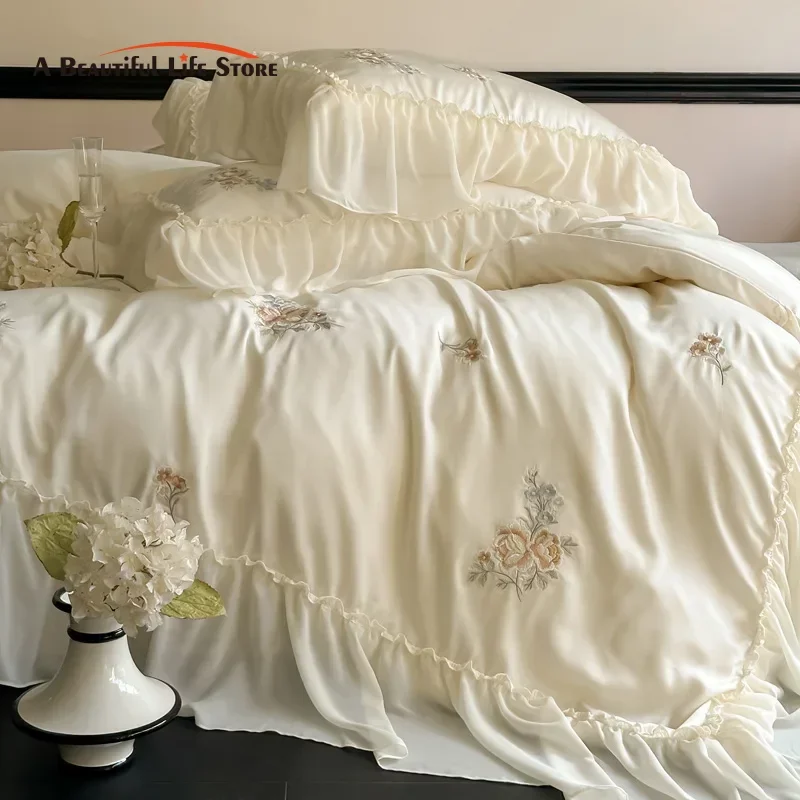
8. Specialized Silk Weave Structures
Beyond the fundamental weave categories, several specialized structures create silk fabrics with truly unique characteristics. These specialized techniques often require specific equipment and expertise, resulting in premium textiles with distinctive properties.
Silk Velvet
* Features short, dense pile on a plain weave foundation
* Created through complex warp-pile weaving technique
* Luxuriously soft surface with dimensional texture
* Rich color depth due to light absorption by pile
* Requires special looms and significantly more silk than flat weaves
Silk Chiffon
* Ultra-lightweight plain weave with specially twisted yarns
* Created using alternating S and Z twist yarns to create slight puckering
* Almost transparent appearance with gentle texture
* Surprisingly strong despite extreme lightness
* Drapes beautifully while maintaining some structure
Silk Gauze
* Open weave structure with visible spaces between threads
* Created using lower thread counts and specialized finishing
* Extremely lightweight and breathable
* Creates interesting visual layering effects
* Varies from semi-sheer to transparent
The production of specialized silk weaves often represents the pinnacle of textile craftsmanship. Silk velvet, for example, requires almost twice the amount of silk as flat weaves because the pile threads must be densely packed and then precisely cut to create the plush surface. This resource intensity explains why silk velvet historically represented the height of luxury, affordable only to royalty and nobility.
These specialized structures demonstrate silk’s remarkable versatility. The same natural fiber can create fabrics ranging from nearly transparent (gauze) to richly textural (velvet) through variations in weaving technique and thread preparation. This adaptability has helped silk maintain its position as a premium textile despite the development of countless synthetic alternatives.
For the most discerning consumers, specialized silk weaves create truly distinctive products within the luxury silk bedding sets category, where their unique tactile and visual properties elevate the sleep experience beyond conventional options.
9. Comparing Silk Weave Properties for Practical Applications
When selecting silk fabrics for specific uses, understanding how different weaves perform across key characteristics helps make informed decisions. The table below provides a comparative overview of major silk weave categories based on practical considerations:
| Weave Type | Luster/Sheen | Drape | Texture | Durability | Care Requirements |
|---|---|---|---|---|---|
| Plain (Habotai) | Moderate | Balanced | Smooth | Good | Moderate |
| Plain (Taffeta) | Low-Moderate | Structured | Crisp | Very Good | Easy |
| Satin (Charmeuse) | Very High | Fluid | Very Smooth | Fair | Demanding |
| Satin (Duchess) | High | Semi-structured | Smooth | Moderate | Moderate |
| Twill | Moderate | Good | Subtle Texture | Very Good | Easy |
| Jacquard/Brocade | Varies | Structured | Patterned | Good | Moderate |
| Crepe de Chine | Low-Moderate | Excellent | Slightly Textured | Good | Easy |
| Velvet | Deep (not shiny) | Heavy | Plush | Moderate | Very Demanding |
Environmental factors significantly impact silk performance regardless of weave. Humidity increases silk’s natural strength but can affect drape and appearance. High temperatures can gradually degrade protein fibers, though silk withstands heat better than many natural alternatives.
For bedding applications, the best silk weave bedding often balances several factors. Charmeuse satin provides unmatched smoothness beneficial for hair and skin, while twill offers better durability for nightly use. Plain weaves provide excellent temperature regulation, while crepe structures add textural interest.
When comparing silk to other bedding materials, the silk vs cotton fabric comparison reveals that silk’s protein structure provides natural benefits regardless of weave, including hypoallergenic properties and moisture management. The weave pattern then enhances or modifies these inherent characteristics to suit specific needs.
Full-size Silk Sheets, King Size Silk Sheets, Queen Size Silk Sheets, Twin Size Silk Sheets, Washable Silk Sheets
Price range: $95.95 through $178.37 Select options This product has multiple variants. The options may be chosen on the product page100% Silk Sheets, Green Silk Sheets, King Size Silk Bedding Set, Mulberry Silk Bedding Sets, Queen Size Silk Bedding Set
Price range: $1,246.21 through $1,615.22 Select options This product has multiple variants. The options may be chosen on the product pagePink Silk Sheets, Twin Size Silk Sheets
$171.80 Select options This product has multiple variants. The options may be chosen on the product pageFull-size Silk Sheets, Pink Silk Sheets
$136.31 Select options This product has multiple variants. The options may be chosen on the product pageFull Silk Bedding Set, King Size Silk Bedding Set
Price range: $120.99 through $190.49 Select options This product has multiple variants. The options may be chosen on the product pageGrey Silk Sheets, Silk Sheet and Pillowcase Set
Price range: $88.20 through $146.64 Select options This product has multiple variants. The options may be chosen on the product page
For practical applications, consider how the fabric will be used: high-traffic items benefit from more durable weaves, while decorative or special-occasion uses might prioritize aesthetic qualities over longevity.
10. Identifying Quality in Silk Weave Patterns
The quality of silk fabric involves much more than simply identifying the weave pattern—it requires careful evaluation of several key factors that together determine the textile’s performance and longevity.
Key Quality Indicators:
- Even thread distribution and consistent weave – Examine the fabric for uniform appearance without gaps, bunching, or irregular threads
- Appropriate momme weight – Premium silk bedding typically ranges from 19-25 momme, balancing durability with drape
- Color consistency and depth – Quality silk displays rich, even coloration throughout the fabric
- Edge finishing and selvage quality – Well-finished edges without fraying indicate careful manufacturing
- Appropriate sheen for specific weave type – Each weave should display characteristic luster without appearing artificial
When examining silk fabrics, it’s important to distinguish between natural variations and actual manufacturing defects. Silk is a natural fiber, and minor variations in texture can be expected, especially in handcrafted or minimally processed varieties. However, significant irregularities in weave tension, color blotches, or structural weaknesses indicate quality issues.

Simple tactile assessments can reveal much about silk quality. The “hand feel” test involves gently scrunching the fabric—quality silk should feel smooth, resilient, and substantial without being heavy. A drape test, where fabric is held up and allowed to hang naturally, reveals how the silk will behave in use—quality silk drapes elegantly rather than stiffly.
Authenticating genuine silk becomes increasingly important as sophisticated synthetics enter the market. The selecting silk weaves luxury process should include verification tests like the burn test (silk burns slowly with a smell similar to burning hair) or the ring test (genuine silk can be pulled through a ring due to its natural compression).
At Sanctuary Soft, each silk product undergoes rigorous quality assessment to ensure it meets these standards, providing customers with genuine luxury that performs as expected over time.
11. How Does Weave Pattern Affect Silk’s Longevity?
The weave pattern chosen for a silk product significantly impacts its durability and functional lifespan. Different structures distribute tension and wear in distinct ways, leading to varied performance over time.
Which weaves last longest?
Tightly woven constructions like twill and taffeta generally offer superior durability. Their structures distribute tension across multiple threads, reducing the impact of friction at any single point. Twill silks typically demonstrate 30-40% better abrasion resistance than equivalently weighted satin weaves.
Which weaves require special care?
Satin weaves, with their floating threads, remain more vulnerable to snagging and abrasion. Their exceptional smoothness comes with a practical trade-off in durability. Similarly, open weaves like gauze or chiffon require gentle handling to maintain their integrity.
How does thread count relate to longevity?
Higher thread counts generally indicate better durability—to a point. For silk, the optimal balance typically occurs in the mid-range densities. Extremely high thread counts can actually reduce durability by creating overly rigid structures that don’t allow natural fiber movement.
Can proper care extend silk’s lifespan across all weaves?
Absolutely. Regardless of weave pattern, proper care dramatically extends silk’s useful life. Gentle washing, protection from direct sunlight, and appropriate storage benefit all silk varieties, though more delicate weaves require extra attention to these protocols.
12. Is Silk Weave Selection Different for Various Climates?
Silk’s natural temperature-regulating properties make it suitable for various climates, but certain weave patterns optimize performance in specific environments.
In hot, humid environments:
* Looser weaves like gauze or light habotai maximize breathability
* Crepe structures create microscopic air pockets that enhance cooling
* Plain weaves with minimal finishing allow maximum moisture wicking
In cold, dry environments:
* Denser constructions like heavy twill provide better insulation
* Satin weaves create a smoother barrier against dry air
* Jacquard and textured weaves trap warm air in their structure
The breathability difference between weave types can be substantial. Open weaves can allow up to 30% more air circulation than their dense counterparts, making weave selection particularly important for sleepwear and bedding where temperature regulation affects comfort.
For those who tend to sleep warm, silk weave options for hot sleepers suggests lighter, more breathable constructions that maximize silk’s natural cooling properties while wicking moisture away from the body. Conversely, cooler sleepers might prefer slightly denser weaves that retain more body heat.
Seasonal adjustments can optimize comfort—switching between different silk weaves for summer and winter bedding allows you to enjoy silk’s natural benefits year-round while maintaining ideal sleeping temperatures.
13. Can Different Silk Weaves Affect Skin Health?
The interaction between silk fabrics and skin varies notably across different weave patterns, with potential implications for skin health and comfort.
Which silk weaves are gentlest on sensitive skin?
Smooth-surfaced weaves like satin and fine habotai minimize friction against skin, reducing potential irritation. Their uninterrupted surfaces glide over skin rather than catching or abrading. For extremely sensitive skin, charmeuse satin typically offers the most friction-free experience.
Do textured weaves cause irritation?
Despite their visual texture, properly finished crepe silks rarely irritate skin. The texture occurs at such a fine scale that many sensitive individuals actually prefer crepe silks for their softness and natural feel. However, more pronounced textures like heavy twills may create more noticeable friction.
How do different weaves perform for allergy sufferers?
All silk weaves offer hypoallergenic benefits due to the protein structure of the fiber itself. However, tighter weaves may provide additional protection by creating a more effective barrier against dust mites and potential allergens. This makes dense habotai and quality satin particularly suitable for allergy sufferers.
What about moisture management for skin health?
Weave structure affects how effectively silk manages moisture near the skin. More open structures allow faster evaporation, while smoother weaves spread moisture over a larger surface area for efficient wicking. For conditions requiring moisture management, medium-weight plain weaves often provide the optimal balance.
14. What’s the Difference Between Machine and Hand-Woven Silk?
The method used to weave silk—whether by hand or machine—creates distinctive characteristics that affect both the fabric’s aesthetic and performance qualities.
Machine-woven silks offer remarkable consistency. Modern looms produce perfectly regular weaves with uniform tension, creating fabrics with predictable performance and appearance. This precision allows for extremely fine adjustments in density and structure that would be difficult to maintain by hand.
In contrast, hand-woven silks display subtle variations that many consider character rather than flaws. These minor irregularities create visual depth and textural interest unique to each piece. The human element in production allows for spontaneous adjustments that can enhance the fabric’s artistic quality.
Production method also affects environmental considerations. Hand weaving typically consumes less energy but requires more time and labor. Machine production offers efficiency but with higher energy requirements. Both approaches can be sustainably implemented with proper practices.
Quality isn’t inherently determined by production method—exceptional silks are produced both by hand and by machine. The choice between them relates more to specific characteristics desired rather than absolute quality differences. Many premium silk products combine both approaches, using machines for basic construction and hand techniques for finishing details.

